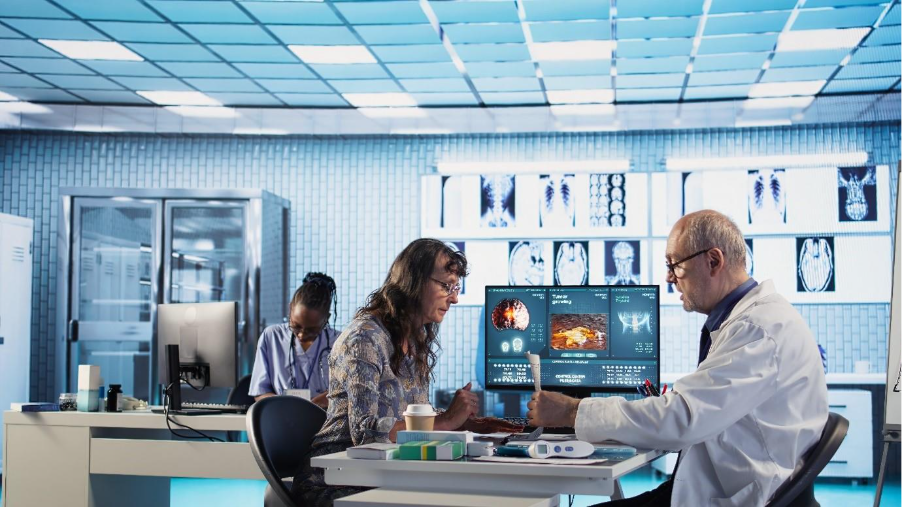Let’s talk about handwashing.
Exciting, right?
Okay, maybe not. But it turns out handwashing—or rather, not doing it—is a pretty big deal in hospitals. One skipped scrub here, another half-hearted rinse there, and suddenly, a hospital becomes a hotspot for infections. Not ideal for a place that’s supposed to make people better.
So hospitals, understandably, have been trying for years to get hygiene compliance right. Posters. Training videos. Sticky notes. More training videos. And still—compliance rates remain lower than you’d expect.
Enter Computer Vision.
No, not the Terminator kind. And no, it’s not going to judge your scrub technique with a sarcastic British accent (although that would be entertaining). We’re talking about real-time, AI-driven monitoring that watches without blinking, forgets nothing, and doesn’t get bored like humans do.
Let’s unpack how computer vision in healthcare is flipping hygiene tracking on its very clean head.
Humans Are Great. But They Blink.
Traditionally, hospitals used people to watch other people wash their hands. Surprise: it didn’t work that well.
People forget things. They get distracted. Or they just feel weird watching someone else scrub their palms. Also, the moment someone knows they’re being observed, guess what? They suddenly remember to wash up. This means most of the data collected is basically staged behavior. Like kids pretending they weren’t fighting when an adult walks in.
Computer vision doesn’t play that game.
It just… watches. Quietly. Relentlessly. Like that one cat in every neighborhood.
The Eye That Never Sleeps
With strategically placed cameras and machine learning models, computer vision can now detect hygiene compliance in real-time. No need for someone to stand there with a clipboard. No awkward eye contact. Just data.
The system tracks things like:
- Whether a healthcare worker entered a patient room.
- Whether they stopped by the sink or sanitizer station first.
- How long they spent there.
- If they skipped it entirely.
And unlike Bob from Quality Control, the AI doesn’t miss a shift. Or take lunch breaks.
But…Isn’t That Creepy?
Totally valid question.
The idea of AI watching people all day might feel a little too sci-fi for comfort. But the tech doesn’t care who you are. It’s not watching faces. It’s watching behaviors. The goal isn’t surveillance for punishment—it’s improvement.
Also, compared to spreading infections unknowingly, a machine giving you a digital side-eye for skipping sanitizer seems like a fair trade.
Still not convinced? Let’s reframe.
If AI can detect a potential lapse before it turns into a full-blown hospital-acquired infection, that’s lives saved. Real, actual lives. Including those of nurses, doctors, janitorial staff—people who deserve better than “hope everyone remembered to scrub in.”
How It Works (Without Frying Your Brain)
Let’s break it down. Briefly. No math, we promise.
Computer vision uses image recognition models trained on footage of people doing hygiene-related actions. These models then analyze live video feeds and match actions to what’s expected.
Sink?
Sanitizer?
Entered patient room with hands still germ party central?
That data gets logged. Reports can be generated. Managers can see trends. And staff can get helpful nudges—not finger-pointing. The idea is to support better habits, not play gotcha.
The Hidden MVP: Boredom-Proof Monitoring
Think about it.
A human observer starts their shift. They’re alert. Watching. Scoring compliance. Then the clock ticks. Second hour. Third. By lunch, they’re just counting tiles on the ceiling.
Computer vision? Still analyzing.
This kind of consistent, unbiased tracking helps hospitals spot real gaps. Not perceived ones. Not anecdotal guesses. Real patterns. And once you see patterns, you can fix them.
Like realizing 80% of hand hygiene lapses happen during shift changes. Or that one sanitizer station is weirdly hidden behind a fake plant. The fix? Move the plant. Not retrain the whole floor.
Better Data, Fewer Infections
Hospitals implementing computer vision hygiene tracking have reported big drops in hospital-acquired infections (HAIs). Because guess what happens when people know the system is there?
They get better at hand hygiene.
Not because they’re afraid. But because reminders are real. Data is visible. And improvement becomes measurable. No more wishful thinking. No more, “I think we’re doing fine.”
Also: staff stop resenting being told to wash their hands by a fellow human. A screen suggesting it? Weirdly less annoying.
AI Doesn’t Call In Sick
Let’s get practical.
Hospitals have staffing issues. Constantly. People leave. People get sick. Or tired. Or both.
Computer vision systems don’t flinch. They don’t go on vacation. They just keep doing their job—quietly collecting data, day in, day out. For infection control teams, that consistency is gold.
It’s Not Just About Clean Hands
There’s a domino effect.
When hygiene improves, so does patient trust. Staff morale goes up. Everyone feels a little safer. And resources once spent treating avoidable infections? They can go elsewhere—like better equipment or more nurses on the floor.
Also, administrators finally have clean, clear reports they can take to audits without sweating bullets.
Computer vision in healthcare isn’t just about making people cleaner. It’s about making hospitals smarter.
And Let’s Be Honest…
Half the time, AI gets hyped for doing stuff humans already do. But this—this is one area where AI genuinely earns its spot.
Because no human should have to spend their workday watching hands. No nurse should fall ill because someone skipped sanitizer. And no patient should pick up an infection that could’ve been avoided.
So…Is It the Future?
Probably.
Computer vision in healthcare is gaining ground. Fast. Because it solves a real problem in a way that’s not boring. And hospital administrators—bless them—finally have something reliable that doesn’t involve sticking more posters in restrooms.
It’s efficient. It’s practical. And it doesn’t need coffee breaks.
So next time you walk into a hospital and see a small sign that says “This area monitored by AI for hygiene compliance,” smile.
And wash your hands.
Because even if no one’s watching—you know the AI probably is.
